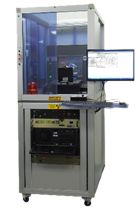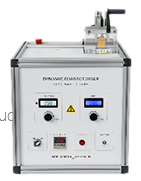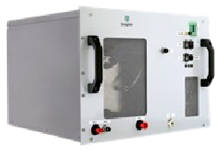上海埃飞科技
Worldwide Technology(S. H)上海埃飞科技
Worldwide Technology(S. H)产品展示




Quantum Electron Paramagnetic Resonance (EPR) Spectrometer

Incorporating an innovative resonator design and quantum control algorithms, this device surpasses traditional EPR spectrometers. Its compact form factor, unmatched sensitivity, speed, and usability make it ready for deployment in any laboratory environme
High Sensitivity: Requires only 2.4 µL of sample volume to measure micromolar concentrations within two hours.
Load-and-Go Operation: Simply pipette the sample into the sample holder, enter the sample name and label type in the software interface, and load the sample into the instrument. The system automatically inserts the sample, optimizes its placement, and begins measurement—all within minutes. Up to five samples can be processed in the same holder for unattended, continuous measurements.
Automatic Sample Optimization: An automated calibration procedure ensures that each sample is measured with optimized analysis parameters, saving time and reducing the need for specialized expertise.
Applications:
Next-Generation Quantum EPR Solutions for Biophysical Applications
Ligand-Induced Conformational Changes and GPCRs:
G protein-coupled receptors (GPCRs) are membrane proteins whose conformational regulation plays a role in various cellular functions, impacting everything from vision to behavioral regulation. The combination of precise EPR distance distributions with molecular modeling is ideal for analyzing subtle conformational changes in GPCRs, leading to a better understanding and targeting of their signaling behavior.
Protein-Protein Complexes and Targeted Protein Degradation:
Targeted protein degraders can focus on and destroy previously undruggable proteins associated with cancer and immune diseases. The effectiveness of these approaches depends on the fine structure and formation of ternary complexes. Intermolecular EPR distance constraints can reveal complex formation and quaternary structure arrangements that are difficult to determine with standard biophysical techniques.
Kinetic Measurements and Intrinsically Disordered Proteins (IDPs):
IDPs challenge the classical structure-function paradigm of understanding protein activity. While dynamic features are difficult to capture using NMR, cryo-electron microscopy, and X-ray crystallography, EPR reports probability distributions of distances, which are inherently sensitive to protein dynamics and flexibility.
Structural Validation and Sample Screening for Cryo-EM and AlphaFold:
AlphaFold and cryo-EM have revolutionized protein structure determination. EPR distances provide simple point-to-point constraints for the comparison and validation of AlphaFold predictions and cryo-EM structures.
因用于机器人各方面应用且与大多数机器人类型兼容,AutoCal系统可以检测出机器人自身构造和工具中心点(TCP)的 突然改变或偏离,并且该系统无需人为干涉就自动地更正这些误差。
AutoCal系统-Dynalog的先进水平校准技术,Dynalog是机器人单元标定技术的世界领导者。它的主流产品DynaCal 系统,被应用于离线的机器人单元校准,并作为最精确的和技术先进的机器人校准程序为许多机器人制造商和终端使用者所接受。AutoCal 系统将已证实的DynaCal校准技术结合到一个在线的全自动系统中,该系统专为程序控制和复原而设计的,价格低廉。
AutoCal系统提供在线的机器人校准方案,旨在快速和自动地保证机械设备的工作性能。因用于机器人各方面应用且与大多数机器人类型兼容,AutoCal系统可以检测出机器人自身构造和工具中心点(TCP)的 突然改变或偏离,并且该系统无需人为干涉就自动地更正这些误差。这意味着不用猜测哪里会出错,不用浪费宝贵时间在机器人程序重复校准上,产品品质无任何损失。
AutoCal系统-Dynalog的先进水平校准技术,Dynalog是机器人单元标定技术的世界领导者。它的主流产品DynaCal 系统,被应用于离线的机器人单元校准,并作为最精确的和技术先进的机器人校准程序为许多机器人制造商和终端使用者所接受。AutoCal 系统将已证实的DynaCal校准技术结合到一个在线的全自动系统中,该系统专为程序控制和复原而设计的,价格低廉。